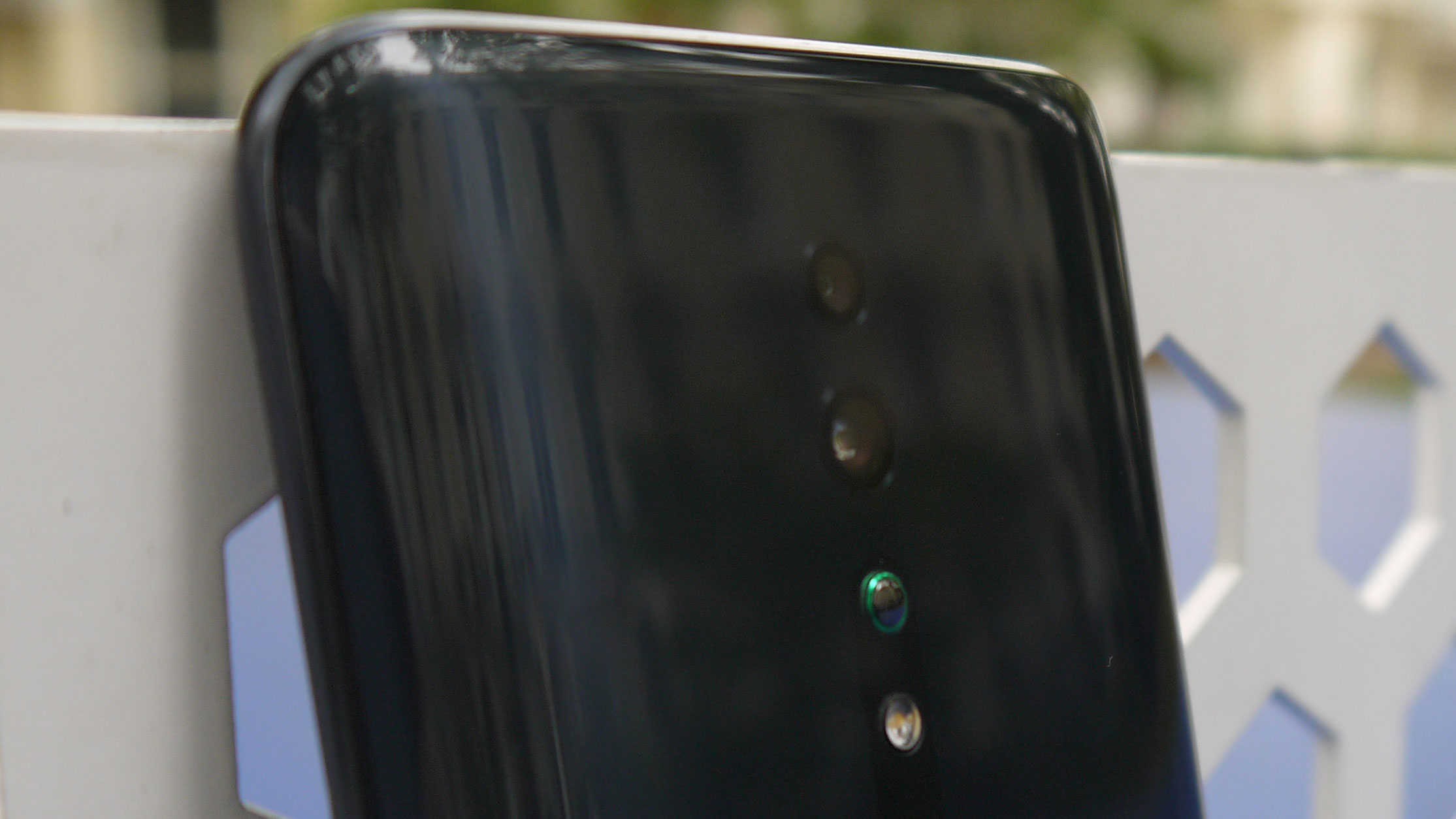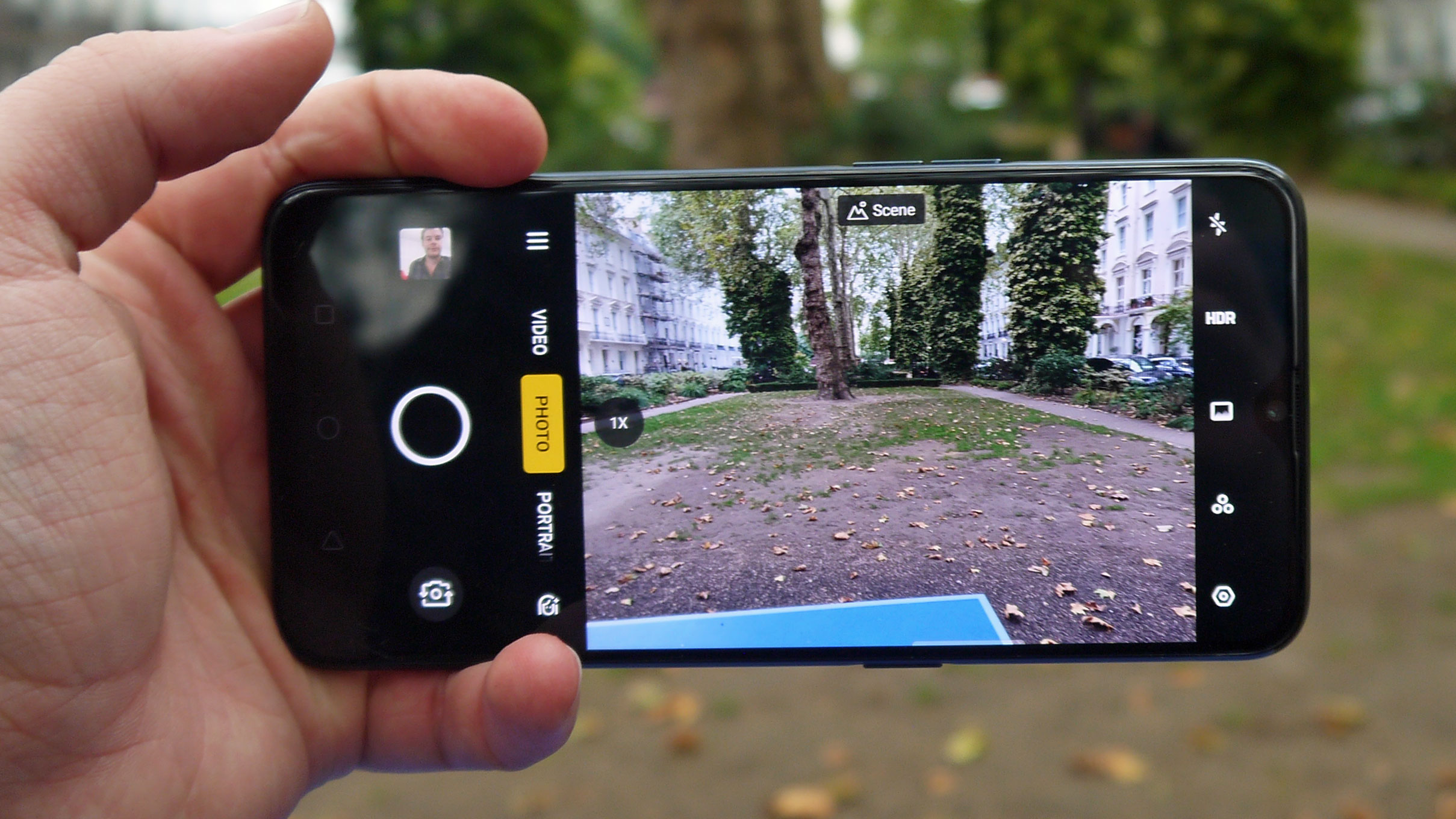Why you can trust TechRadar
Battery life
The Oppo Reno Z has a 4,035mAh battery, which is fairly sizeable for a budget smartphone, and we certainly weren’t disappointed with its performance.
With medium to heavy use the Reno Z easily lasted a day, and with light use it managed to last two full days before it needed recharging. That heavy use included a gaming, and we were able to enjoy lengthy sessions without having to worry about the battery running down.
When we put the handset through our battery test, which involves looping a 90-minute video at full brightness with accounts syncing over Wi-Fi in the background, the device lost 10% of its battery. That’s an impressive performance – it’s the same as the Huawei Mate 20 Pro, which has a similar screen size but a slightly bigger battery (and costs a good deal more), and better than competitors like the Google Pixel 3a, which lost 16%.
Recharging the Oppo Reno Z is fairly snappy, thanks to Oppo’s 20W VOOC fast charging tech, but it wasn’t as quick as competitors’ equivalents, and it took a little longer to power the device to 100% than we’d have liked.
Camera
The camera is the Oppo Reno Z’s weakest link. It’s certainly not a bad camera compared to competitors, and it has some impressive specs, but it doesn't have enough versatility to make it useful in every situation. This is to be expected from its price tag, but it’s still enough to give you cause to question if the Reno Z is for you.

The Reno Z has two rear cameras. The first has a 48MP sensor and f/1.7 lens, and the latter is a 5MP f/2.4 depth-sensing camera. If these specs sound familiar, it’s because they’re the same as the Oppo Reno. No, there’s no ultra-wide-angle or telephoto lens, which are both staples of most modern smartphone cameras (on mid-rangers and above, and even at this price point), and you can feel their absence when you use the device.
The lack of an ultra-wide lens is jarring enough when you use the feature frequently, either for group selfies or to take panoramic shots with larger fields of view, but the loss of the telephoto lens is most noticeable. This is typically used for optical zoom, and in its absence you can only use digital zoom of up to 10x – and these pictures are so grainy that it’s not worth taking them.
Sign up for breaking news, reviews, opinion, top tech deals, and more.
When you’re just taking normal, non-zoomed pictures using the Oppo Reno Z, there’s a lot to like: colors are captured well without looking either muted or overly saturated; autofocus is quick and accurate, and scene optimization, HDR and Dazzle Colors all work fluidly without compromising the natural look of pictures.
One issue we found now and then is that the scene optimization setting mis-read a subject: one example was a rocky outcrop being identified as a ‘bouquet’, which it most certainly wasn’t. This issue was fairly rare, however.

In outdoor settings, we found the Reno Z couldn’t always capture long or wide shots with great color or detail accuracy, and the AI camera tech didn’t handle exposure well. We often had to dive into the Expert mode and tinker with the settings to get the best shots.
Close-up shots looked great though – as mentioned autofocus is fast, and in general the image quality is high, likely thanks to the 48MP sensor. Portrait Mode makes the most of the depth sensor, and as a result background blur in portrait shots was usually appropriate, without looking too artificial or mistakenly blurring parts of the subject.
Pictures taken in low-light settings looked okay. Night Mode, used both at night and in dark indoor conditions, produced images that were brighter than standard shots, but at the expense of a lot of image quality, so these pictures often looked a little soft as a result.
The Oppo Reno Z’s front-facing camera is 32MP, so it’s actually got a higher resolution than the 16MP Oppo Reno selfie snapper. Pictures taken on this were high quality, with the higher pixel count capturing enough detail for selfies to look appropriately colorful and well-lit, even when the lighting conditions weren’t optimal.
In general, we found the camera more than perfectly capable for taking portrait pictures and standard shots using the main camera, but if you want anything more, be it a zoomed shot, low-light picture or outdoor panorama, you might want to consider looking at a higher price point for a great camera phone.
The camera app is very quick and snappy to use, which is no surprise given the 8GB RAM on board, and it has the standard UI you’ll find on most Android phones.
Camera samples








Current page: Battery life and camera
Prev Page Introduction, availability and design Next Page Anything else I should know?
Tom Bedford joined TechRadar in early 2019 as a staff writer, and left the team as deputy phones editor in late 2022 to work for entertainment site (and TR sister-site) What To Watch. He continues to contribute on a freelance basis for several sections including phones, audio and fitness.
